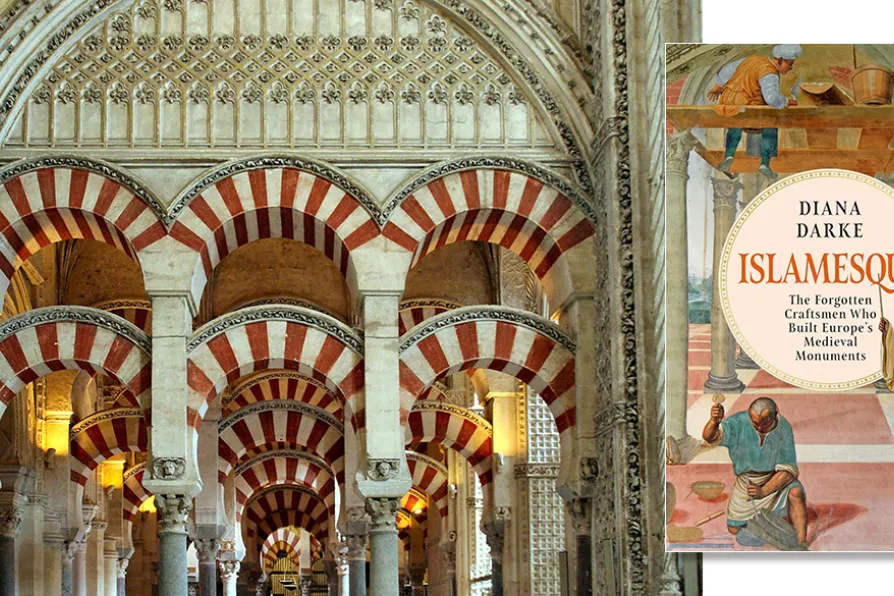JOE GILL speaks to the Palestinian students in Gaza whose testimony is collected in a remarkable anthology

 EVOLUTION OF GOTHIC FROM ISLAMIC: Arches of the former mosque, the Cordoba Mezquita, in traditional Islamic style and completed in 971, are incorporated into the Gothic style of the transept of the Main Chapel (1523)
[Daderot/CC]
EVOLUTION OF GOTHIC FROM ISLAMIC: Arches of the former mosque, the Cordoba Mezquita, in traditional Islamic style and completed in 971, are incorporated into the Gothic style of the transept of the Main Chapel (1523)
[Daderot/CC]
Islamesque: the forgotten craftsmen who built Europe’s medieval monuments
Diana Darke, Hurst, £25
THIS is a wonderful book, fully and colourfully illustrated. Diana Darke is an Arabist and cultural expert who has lived and worked in the Middle East for over 30 years. She describes beautifully hundreds of cathedrals, churches, monasteries, palaces and castles.
She challenges the conventional wisdom that only Rome could be the source of Christian architecture. The accepted idea is that the “Romanesque” style simply emerged between 1000 and 1250 across the whole of Europe, making it the first pan-European architectural style since Imperial Roman.

HENRY BELL notes the curious confluence of belief, rebuilding and cheap materials that gave rise to an extraordinary number of modernist churches in post-war Scotland

KEN COCKBURN assesses the art of Ian Hamilton Finlay for the experience of warfare it incited and represents

LOUISE BOURDUA introduces the emotional and narrative religious art of 14th-century Siena that broke with Byzantine formalism and laid the foundations for the Renaissance











